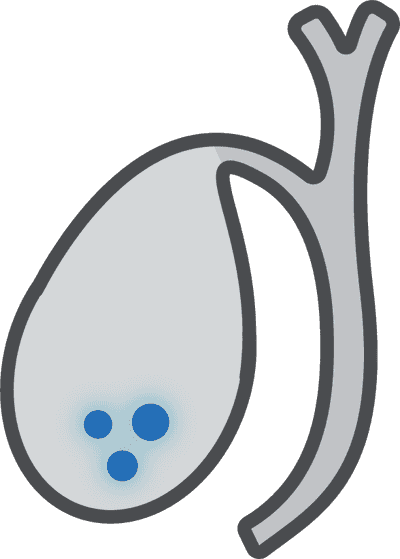Understanding Gallstones: What Are They and How Are They Formed
Blog

Gallstones are a common digestive condition that can cause discomfort, pain, or even serious complications if left untreated. At NYGA, we diagnose and treat gallstones using the latest tools and techniques, helping patients find relief and protect their long-term digestive health. Here’s what you should know about gallstones, how they form, and ways to lower your risk.
What are gallstones?
Gallstones are solid particles that develop in the gallbladder, a small organ under the liver that stores and releases bile. Bile is a digestive fluid that helps break down fats in your diet. Gallstones can vary in size from as small as a grain of sand to as large as a golf ball. Some people may have just one gallstone, while others may develop several.
Where Gallstones Form (Gallbladder Function)
The gallbladder’s main job is to store bile produced by the liver and release it into the small intestine during digestion. If the balance of substances in bile, such as cholesterol, bile salts, and waste products, is disrupted, these components can harden into gallstones.
Types of Gallstones
There are two main types:
Cholesterol gallstones are the most common type and are formed when bile contains too much cholesterol.
Pigment gallstones are made of bilirubin, a substance produced when red blood cells break down; they are often linked to certain medical conditions, like liver disease or infections of the bile ducts.
How do gallstones form?
Gallstones form when bile contains an imbalance of cholesterol, bile salts, or bilirubin. This imbalance can cause crystals to develop, which then clump together into stones. Gallstones may also form if the gallbladder doesn’t empty completely or often enough, allowing bile to become concentrated.
Who is most at risk?
While anyone can develop gallstones, lifestyle and dietary contributors make them more likely.
- High-fat, high-cholesterol diets can increase bile cholesterol levels
- Low-fiber diets may slow digestion, leading to a bile imbalance
- Rapid weight loss can trigger the liver to release extra cholesterol into the bile
- Sedentary lifestyle and lack of regular physical activity can also play a role
Other risk factors include being over age 40, female, pregnant, having a family history of gallstones, or living with certain health conditions such as diabetes or liver disease.
Signs and Symptoms of Gallstones
Some gallstones cause no symptoms and are only found during imaging for another condition. When symptoms do occur, they may include:
- Sudden, intense pain in the upper right or middle abdomen
- Pain between the shoulder blades or in the right shoulder
- Nausea or vomiting
- Acid reflux, bloating, or discomfort after eating fatty meals
- Severe pain, fever, jaundice (yellowing of the skin or eyes), or chills may indicate a blocked bile duct or blocked pancreatic duct, a medical emergency that requires immediate attention.
Can gallstones be prevented?
Not all gallstones can be prevented, but you may reduce your risk by:
- Maintaining a healthy weight through a balanced diet and exercise
- Avoiding crash diets and rapid weight loss
- Eating a high-fiber diet rich in fruits, vegetables, and whole grains
- Choosing healthy fats, such as those from fish, nuts, and olive oil, instead of saturated fats.What to do about gallstones? Depending on your symptoms or lack of symptoms, some gallstones can be just watched, sometimes medications are prescribed to manage them, and in some cases a cholecystectomy (removal of the gallbladder) is needed.
If you’re experiencing symptoms of gallstones or have been diagnosed and want to discuss your treatment options, NYGA’s gastroenterologists can help. We provide comprehensive evaluation, advanced imaging, and personalized care plans to address your symptoms and protect your digestive health.
Don’t wait. Prioritize your health today.
